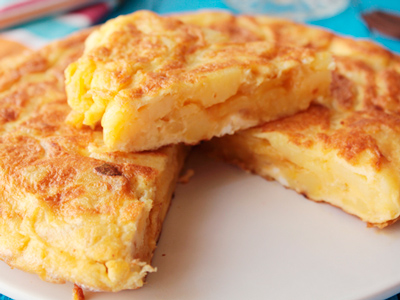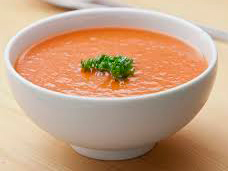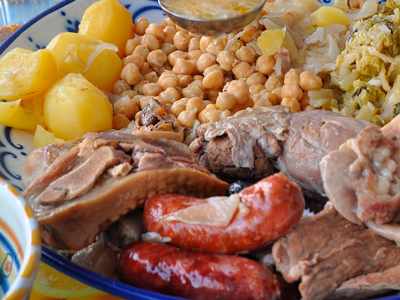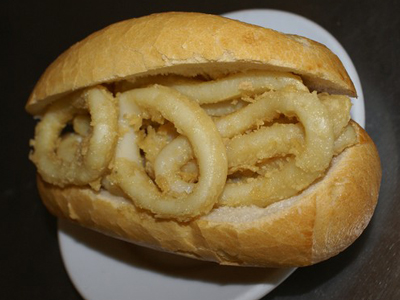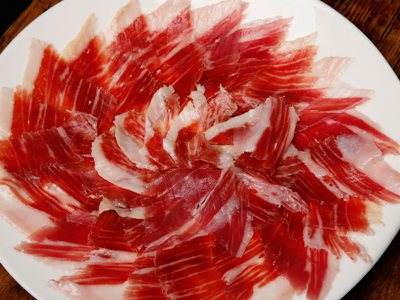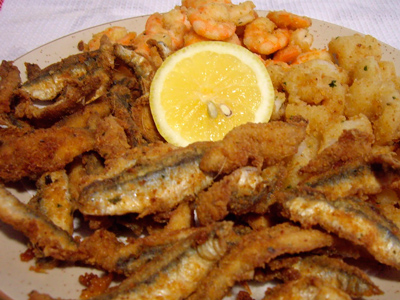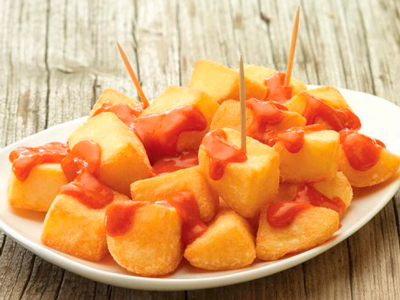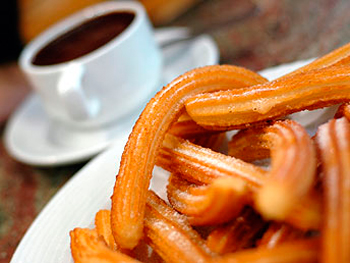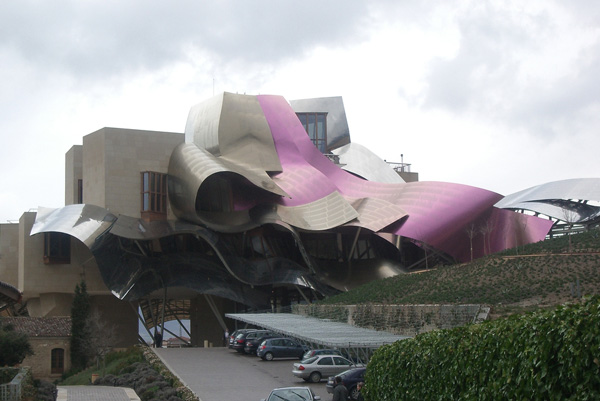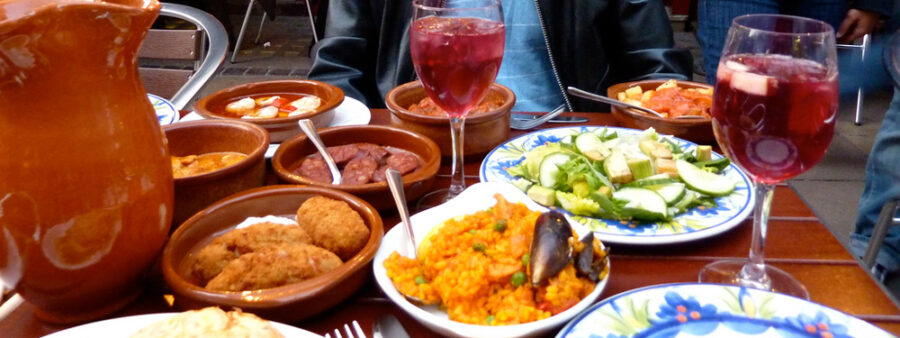
21 Dec Spanish cuisine
Spaniards are proud of their food and wine, and especially their olive oil, which they consider as liquid gold. Spanish food can be described as quite light with a lot of vegetables and a huge variety of meat and fish. Spanish cuisine does not use a lot spices; it relies on the use of high-quality ingredients for its great tast
Tapas
Tapas are “starters” or “appetizers” accompanying a drink consumed in bars. A Spanish custom is to have one tapa and one small drink at a bar, then go to the next bar and do the same. A group may order two or more tapas or order raciones instead, which are a bit larger, in order to share them. In some places the price of the drink is little bit more expensive and includes a good tapa (for example in Granada), other places might have less elaborate tapas that come with the drink (Madrid), and in some places the tapa costs extra.
Menú del día
Many restaurants offer a complete lunch meal for a fixed price (6-10€) – “menú del día”. It includes two courses, dessert and usually water or wine as well.
Lunch times
Spaniards have a different eating timetable than most people in Europe are used to:
- breakfast (el desayuno) is light and consists of just coffee and perhaps magdalena or crackers.
- some spaniards eat “el aperitivo”, a light snack eaten around 12:00. This could include a glass of beer and a large, filled baguette or a “pincho de tortilla”.
- lunch (la comida) starts around 14:00-15:00. This is the main meal of the day with two courses followed by dessert.
- la merienda is an afternoon snack that some, mainly kids, take between la comida and la cena.
- dinner (la cena) starts at 20:30 or 21. People rarely appear in restaurants before 21. It is a lighter meal than lunch.
Wine
Spain has nearly 1.2 million hectares of vineyards and is the third largest producer of wine in Europe, only behind Italy and France. Some of the internationally best known wine regions are: Rioja, Ribera del Duero, famous for its production of Tempranillo, the Jerez, known for its fortified wines, Rias Baixas, known for its white Albariño wines, and Penedes, known for the production of cava. Many wineries have become real attractions, that one can visit during the holidays to discover the wine culture of the region.
In Spain, it is a social custom to drink wines accompanied by tapas in bars. According to the used container and the served amount, it can be called vasos (glass), copas (cup), tazas, cañas, cortos, chatos o txikitos. It is also common to drink wine during lunch.

